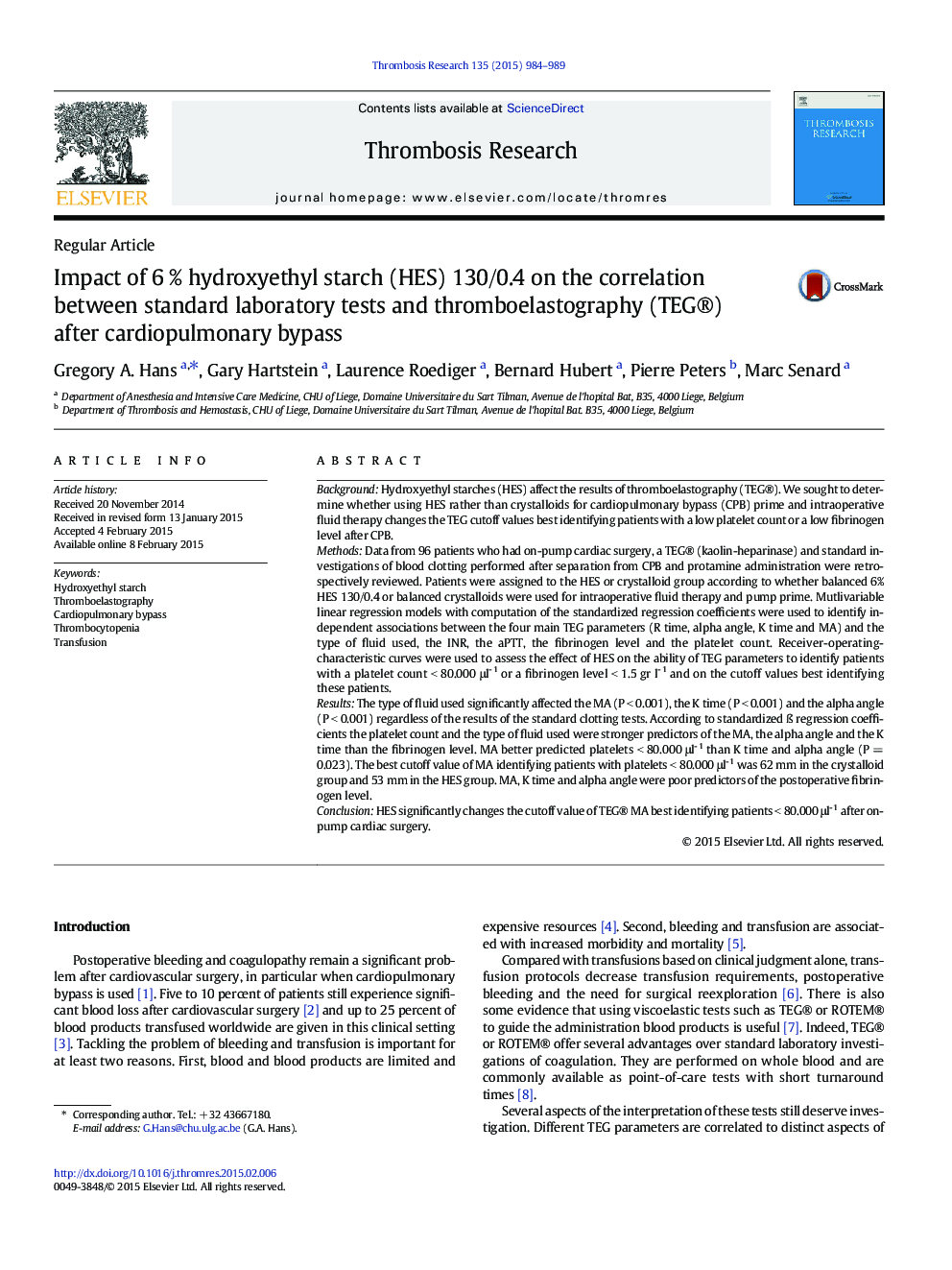| کد مقاله | کد نشریه | سال انتشار | مقاله انگلیسی | نسخه تمام متن |
|---|---|---|---|---|
| 6001612 | 1182953 | 2015 | 6 صفحه PDF | دانلود رایگان |

- HES affects TEG® MA, K and α regardless of platelets and fibrinogen.
- TEG® MA best predicts low platelets after cardiopulmonary bypass.
- HES changes the cutoff value of MA identifying low platelets.
- Kaolin TEG® poorly predicts low fibrinogen after cardiopulmonary bypass.
BackgroundHydroxyethyl starches (HES) affect the results of thromboelastography (TEG®). We sought to determine whether using HES rather than crystalloids for cardiopulmonary bypass (CPB) prime and intraoperative fluid therapy changes the TEG cutoff values best identifying patients with a low platelet count or a low fibrinogen level after CPB.MethodsData from 96 patients who had on-pump cardiac surgery, a TEG® (kaolin-heparinase) and standard investigations of blood clotting performed after separation from CPB and protamine administration were retrospectively reviewed. Patients were assigned to the HES or crystalloid group according to whether balanced 6% HES 130/0.4 or balanced crystalloids were used for intraoperative fluid therapy and pump prime. Mutlivariable linear regression models with computation of the standardized regression coefficients were used to identify independent associations between the four main TEG parameters (R time, alpha angle, K time and MA) and the type of fluid used, the INR, the aPTT, the fibrinogen level and the platelet count. Receiver-operating-characteristic curves were used to assess the effect of HES on the ability of TEG parameters to identify patients with a platelet count < 80.000 μl- 1 or a fibrinogen level < 1.5 gr l- 1 and on the cutoff values best identifying these patients.ResultsThe type of fluid used significantly affected the MA (P < 0.001), the K time (P < 0.001) and the alpha angle (P < 0.001) regardless of the results of the standard clotting tests. According to standardized à regression coefficients the platelet count and the type of fluid used were stronger predictors of the MA, the alpha angle and the K time than the fibrinogen level. MA better predicted platelets < 80.000 μl- 1 than K time and alpha angle (P = 0.023). The best cutoff value of MA identifying patients with platelets < 80.000 μl- 1 was 62 mm in the crystalloid group and 53 mm in the HES group. MA, K time and alpha angle were poor predictors of the postoperative fibrinogen level.ConclusionHES significantly changes the cutoff value of TEG® MA best identifying patients < 80.000 μl- 1 after on-pump cardiac surgery.
Journal: Thrombosis Research - Volume 135, Issue 5, May 2015, Pages 984-989